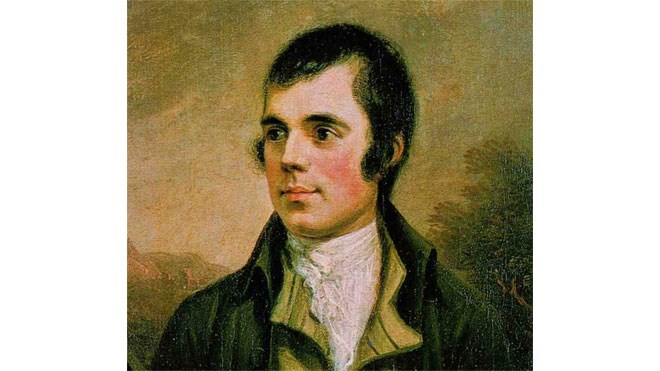He only lived to be 37 years old, but the life of 18th century Scottish poet and lyricist Robert Burns is still celebrated around the world more than two centuries later, including here in Greater Sudbury.
Burns was born Jan. 25, 1759 in Alloway, Ayrshire — his birthday is now celebrated as Robbie Burns Day — and lived to July 21, 1796.
His health began to fail after he joined the Royal Dumfries Volunteers — a home defence unit to counter the threat of post-revolutionary France — in an attempt to prove his loyalty to the Crown.
Burns had openly expressed sympathy for the French and American revolutions. In the wake of joining this volunteer unit, it's said his alleged habits of “intemperance” aggravated a long-standing possible rheumatic heart condition.
If you'd like to celebrate Burns' life, there's a couple of different Robbie Burns Day events happening this week.
One celebration took place at the Parkside Centre on Durham Street starting at 11 a.m. Jan. 25, and featured live music and a traditional Scottish meal of roast beef and haggis.
You can also check out the Lockerby Highlanders Annual Ceilidh at the Lockerby Legion starting at 5 p.m. Jan. 26.
The event, celebrating all things Scottish, includes a Scottish-themed meal, and performances by the Lockerby Highlanders Pipe Band and Dance Team, local musician Andy Lowe and the Jubilee Folk Ensemble. More details are available on the event's Facebook page.
“It's a fun event,” said organizer Derek Young. “It's light hearted. We sort of adapted it a little more now. We're looking at ways we can still keep the spirit of Burns alive, but our event is becoming more of a Scottish cultural celebration.”
Roger Nash, the city's first poet laureate and a Burns poetry aficionado, said Burns' influence is still felt today.
If you've ever sang the song “Auld Lang Syne” on New Year's (Hogmanay in Scotland), you might not be aware that you're singing a Burns composition.
“Scots Wha Hae” is Scotland's unofficial national anthem. Other poems and songs of Burns that remain well known across the world today include "A Red, Red Rose," "A Man's a Man for A' That," "To a Louse," "To a Mouse," "The Battle of Sherramuir," "Tam o' Shanter" and "Ae Fond Kiss.”
As well as making original compositions, Burns also collected folk songs from across Scotland — he's the reason why such a rich record of these songs exist today, Nash said.
Burns, who wrote in the Scots language, as well as English and a mix of the two, influenced later poets including Wordsworth, Coleridge and Shelley. His poetry is widely translated into Russian, where he was very popular after the revolution, as he was seen as a “people's poet,” Nash said.
“Bob Dylan thinks of Burns as one of his greatest sources of inspiration,” Nash said. “He's had a big influence.”
Given his poetry often comments in rather radical ways on the class system, his work has things to say about what's going on in the 21st century, up to and including Trump, he said.
“In a lot of his poems he's supporting the commonality of human beings together and perhaps the overthrow of monarchies,” Nash said.
Burns, whose roots were as a farmer, and is known as “the Bard of Ayrshire” and “Ploughman Poet,” wrote poems that appealed to ordinary people.
A good example is "To a Mouse” — one of Nash's favourites — which Burns wrote after plouging up a mouse's nest in the field, and talks about his feelings of guilt about harming the mouse.
“Is There for Honest Poverty,” commonly known as “A Man's a Man for A' That,” speaks of the equality of all humanity, whether they be rich or poor.
Laurentian University associate professor of English Susan Glover, an 18th century specialist who teaches Burns in her classes as part of a lower-class group of poets known as the "labouring poets," said she loves both “To A Mouse” and “A Man's a Man.”
The latter poem, she said, is a “very radical prophecy for the day coming when all men will be equal."
